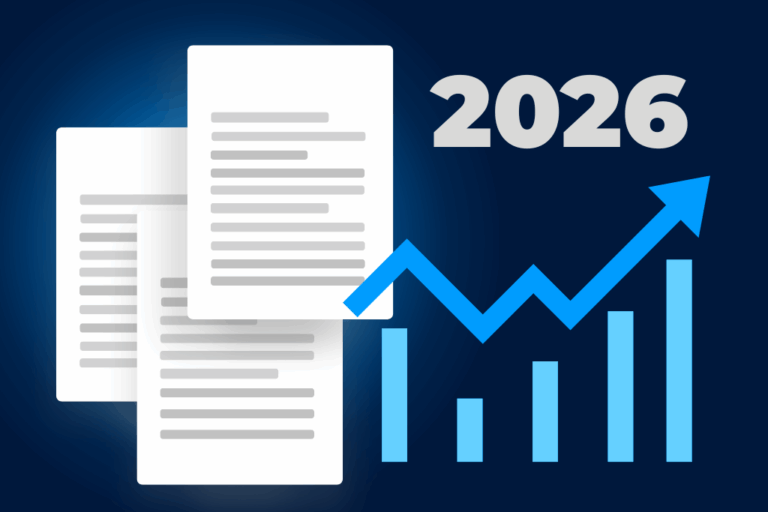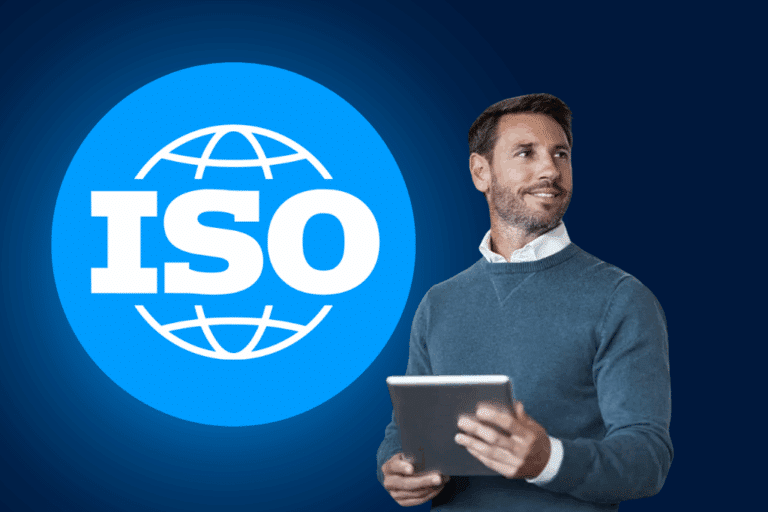This article is the first in a three-part series aimed at guiding you through the successful implementation of your CLM solution. In this initial installment, we’ll dive into the Design phase. This is the crucial foundation where you define objectives, align key stakeholders, and establish a clear roadmap. These steps ensure a smooth and efficient CLM Implementation.
CLM Implementation Design phase
The design phase is a crucial step in any CLM implementation—it lays the foundation for a successful rollout. During this phase, the focus is on preparing your internal project team and governance. You will also define needs and clear objectives, setting the stage for the entire project. Investing time in thorough planning here will help prevent future challenges. It will also ensure that everyone is aligned on both the goals and the process.
Four key steps
The design stage of CLM implementation can begin even before you’ve selected the solution itself. Getting a head start helps you clarify your goals and ensures the solution you choose aligns perfectly with your company’s needs.
Step 1: Assess needs and expectations
It’s essential to gain a clear understanding of the different needs and expectations related to contracts across your organization. Start by mapping all active contracts, engaging with various teams to uncover their daily challenges, and identifying pain points that need attention. Hosting internal workshops or meetings can help align everyone’s expectations and ensure a unified approach. During this step you can also implement internal surveys to gather as much feedback as possible from the interested users. Make sure to include all the future users of the CLM, by doing so you will be able to evaluate who the main, secondary and third users are. Keep in mind that the responsibility lies with you—not the CLM provider—to assess internal processes and collaborate with stakeholders to ensure alignment.
Step 2: Set clear and realistic goals
Establish clear, achievable goals that align with your organization’s broader objectives and can be realized within a set timeframe. Your CLM provider, supported by a dedicated project manager, will guide you through this process. Starting small doesn’t mean you lack ambition—consider a phased approach, beginning with a minimum viable scope in terms of use cases and departments, and then gradually expand, phase by phase, as you build momentum. Your goals can look like anything such as “% of new contracts signed in less than 48 hours” or “reducing clause errors on certain type of contracts by half”. One of the most common goals is time saving, and as much as a CLM will drastically improve this aspect, keep in mind that a realistic goal is closer to “spending 2 days per week on contract reviews rather than rather than spending 20 minutes per month.
Step 3: Identify key integrations
Take a close look at your organization’s digital ecosystem to identify the tools your CLM solution should integrate with. Focus on the integrations that are most critical to your business, such as syncing with e-signature tools, CRM platforms, or ERP systems. Just like the features, it is possible your teams will need integrations to other tools as they grow, and as the CLM scope of use evolves. The key integrations are the needs and not the nice to have. For instance, if you know some teams work with freelancers on a regular basis, you likely need efficient collaboration across platforms including external parties. Then you know it is essential for you to have a Microsoft 360 or Google integration to work with your freelancers. The use cases you may have taken out from the initial phases of the design process will help you bring to light the critical integrations and their order of priority.
Step 4: Define the CLM Implementation KPIs
Whether it’s contract processing speed or the number of contracts signed each week, setting KPIs helps you track success and pinpoint areas for improvement. With clear metrics in place, you can assess the performance of the CLM system after implementation, making it easier to drive adoption and ensure the tool delivers real value.
What about features?
Identifying the features of the CLM system that align with your goals is key. Whether its clause reviews, contract status tracking, or clause anomaly detection, defining these features early sets the stage for a more efficient configuration phase. However, these features must be identified prior to purchase, as not all solutions offer features on demand. But don’t worry – if you’ve covered your essential needs in the first step, you’ll have a clear understanding of the must-have features. With that you’ll be off to a strong start when implementing your solution.
Building strong project governance
Strong project governance is crucial. How it’s set up has a direct impact on the success of your CLM implementation. Clearly defining roles and responsibilities is key, and using a RACI matrix can help ensure accountability and clarity.
Regular governance meetings, like weekly reviews, should focus on tracking actions, monitoring progress, and identifying potential risks. For larger projects, steering committees may be needed to oversee high-level decisions, manage risks, and maintain alignment across all stakeholders.
Structuring the CLM implementation project team
A strong internal project team is essential for successful implementation. Bring together an IT project manager, project sponsor, key users, and technical experts to drive the project forward and ensure deadlines are met. Close collaboration with the CLM project manager, along with clear communication, defined roles, and the right mix of skills and expertise, are key to keeping everything on track.
Here’s an overview of the key roles to consider for the project:
Client side
| Client Team project | Responsibilities |
| Project Sponsor | Plays a pivotal role in championing the success of the document management project by advocating for the CLM implementation internally. They actively support the transformative processes and facilitate effective communication during periods of change. The sponsor serves as a point of contact for project escalation. This is particularly crucial when issues or delays arise that may be attributed to the client. Their commitment to project success positions the sponsor as a key liaison. They bridge internal stakeholders and project teams. This ensures a cohesive and well-coordinated approach. |
| Business Project Manager | Assumes a crucial role in overseeing project management, coordination and resource allocation within the organizational framework. Collaborates closely with the Provider Project Manager. They work hand-in-hand to actively coordinate various facets of the project. This collaboration involves strategic planning, efficient resource utilization, and seamless coordination. These aspects are essential to ensure the project progresses according to plan. |
| Technical Contact | They handle integration processes and discussions related to the implementation of API connectors or single sign-on (SSO). Their responsibilities extend to oversight of the seamless retrieval of databases from previous platforms. Additionally, they orchestrate the transfer of client data into the standardized templates, if the provider has any. This critical intervention ensures smooth integration and enhances data interoperability. |
Software Provider
| Provider Team project | Responsibilities |
| Project Manager | Their mission encompasses strategic organization, meticulous planning, and effective coordination of the Provider functional and technical teams. They orchestrate the collaborative efforts of these teams. This alignment of their tasks and objectives meets the overarching goals of the project. They act as a bridge between the provider and the Client. The Project Manager’s responsibilities extend to optimization of resource utilization and timelines management. They oversee the successful CLM implementation. Ultimately, delivering outcomes that meet or exceed the Client’s expectations. |
| Account Manager | Contributes to maintain alignment with the client’s expectations mid-term and long term. They ensure a comprehensive understanding of the envisioned outcomes. Their involvement serves as a valuable reminder of the strategic objectives driving the client’s investment. They foster transparency and reinforce the collaborative partnership between the client and the provider throughout the project lifecycle. |
| Technical project manager | Contact person for technical topics such as SSO, electronic signature connectors, and API-related questions. |
| Data Project Manager | Manages the project aspect related to data migration, whether it involves data extraction or data import . They define the scope and challenges. Additionally, they manage the analysis when taking over the existing contract. They will ensure the acceptance of the data extraction with the Customer |
Digital transformation can be tough, especially when there’s resistance to change or concerns about security. That’s where the project sponsor comes in—playing a key role in driving the initiative, addressing concerns, and ensuring full buy-in, ultimately making the change smoother and more successful.
Expected outcomes
By the end of the design phase, your organization should have achieved the following:
While the CLM provider will offer guidance and support during critical moments of the design phase, the responsibility for defining needs, aligning stakeholders, and preparing internal processes lies within your organization. Taking ownership of this phase is crucial to ensuring a successful implementation.
What’s next?
With the Design phase in place, the first step serves as a crucial foundation for the rest of the implementation project. With clear objectives, well-defined priorities, and everyone onboard you’ll notice a significant difference. Of course, this is just the beginning – stay tuned for the upcoming articles on successfully implementing your CLM solution…
Want to see DiliTrust’s CLM in action?


